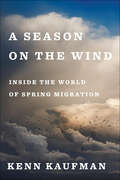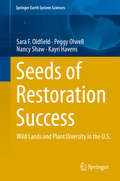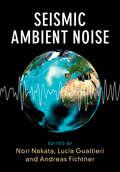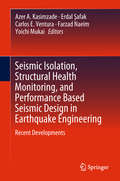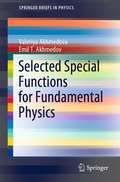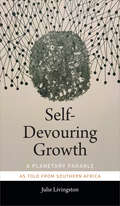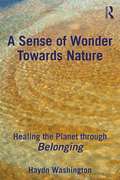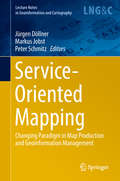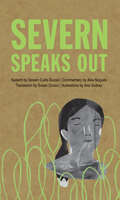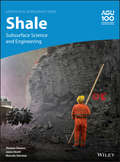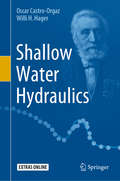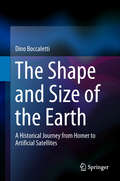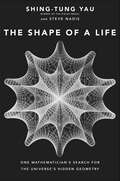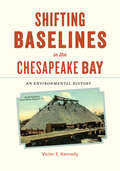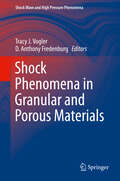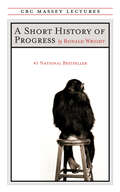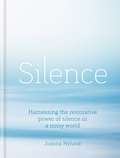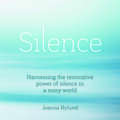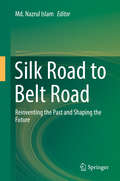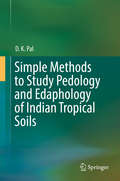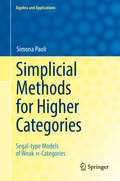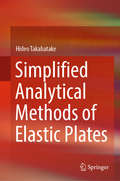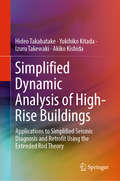- Table View
- List View
A Season on the Wind: Inside the World of Spring Migration
by Kenn KaufmanA close look at one season in one key site that reveals the amazing science and magic of spring bird migration, and the perils of human encroachment. Every spring, billions of birds sweep north, driven by ancient instincts to return to their breeding grounds. This vast parade often goes unnoticed, except in a few places where these small travelers concentrate in large numbers. One such place is along Lake Erie in northwestern Ohio. There, the peak of spring migration is so spectacular that it attracts bird watchers from around the globe, culminating in one of the world&’s biggest birding festivals. Millions of winged migrants pass through the region, some traveling thousands of miles, performing epic feats of endurance and navigating with stunning accuracy. Now climate change threatens to disrupt patterns of migration and the delicate balance between birds, seasons, and habitats. But wind farms—popular as green energy sources—can be disastrous for birds if built in the wrong places. This is a fascinating and urgent study of the complex issues that affect bird migration.
Seeds of Restoration Success: Wild Lands and Plant Diversity in the U.S. (Springer Earth System Sciences)
by Nancy Shaw Kayri Havens Sara F. Oldfield Peggy OlwellThis book provides a general overview of the natural landscapes and vegetation types of the U.S., the key plant species that help define them, the pressures faced by natural ecosystems and the imperative for conservation and restoration. It addresses the policies that have been introduced to manage healthy ecosystems and the practical progress that is being made in restoration. A particular focus is on the production of diverse native plant materials currently required by the National Seed Strategy. Case studies demonstrate how native plant materials are essential to support the conservation of healthy ecosystems with their biodiversity and functions as well as supporting a productive and sustainable agricultural sector and healthy ecosystems for all. The authors are closely connected with major national and international networks of botanic gardens, ecologists and conservation scientists at Board level and through other professional links. Condensing a wide range of current information into a concise format, this book fills a need by experts and informed amateurs interested in the natural environment, including gardeners, botanic garden and protected area visitors, government agencies, the private sector native seed industry, and NGOs.
Seismic Ambient Noise
by Nori Nakata Lucia Gualtieri Andreas FichtnerThe seismic ambient field allows us to study interactions between the atmosphere, the oceans and the solid Earth. The theoretical understanding of seismic ambient noise has improved substantially in the last decades, and the number of its applications has increased dramatically. With chapters written by eminent scientists from the field, this book covers a range of topics including ambient noise observations, generation models of their physical origins, numerical modelling and processing methods. The later chapters focus on applications in imaging and monitoring the internal structure of the Earth, including interferometry for time-dependant imaging and tomography. This volume thus provides a comprehensive overview of this cutting-edge discipline for graduate students studying geophysics and for scientists working in seismology and other imaging sciences.
Seismic Isolation, Structural Health Monitoring, and Performance Based Seismic Design in Earthquake Engineering: Recent Developments
by Azer A. Kasimzade Erdal Şafak Carlos E. Ventura Farzad Naeim Yoichi MukaiThis book features chapters based on selected presentations from the International Congress on Advanced Earthquake Resistance of Structures, AERS2016, held in Samsun, Turkey, from 24 to 28 October 2016.It covers the latest advances in three widely popular research areas in Earthquake Engineering: Performance-Based Seismic Design, Seismic Isolation Systems, and Structural Health Monitoring.The book shows the vulnerability of high-rise and seismically isolated buildings to long periods of strong ground motions, and proposes new passive and semi-active structural seismic isolation systems to protect against such effects. These systems are validated through real-time hybrid tests on shaking tables.Structural health monitoring systems provide rapid assessment of structural safety after an earthquake and allow preventive measures to be taken, such as shutting down the elevators and gas lines, before damage occurs. Using the vibration data from instrumented tall buildings, the book demonstrates that large, distant earthquakes and surface waves, which are not accounted for in most attenuation equations, can cause long-duration shaking and damage in tall buildings.The overview of the current performance-based design methodologies includes discussions on the design of tall buildings and the reasons common prescriptive code provisions are not sufficient to address the requirements of tall-building design. In addition, the book explains the modelling and acceptance criteria associated with various performance-based design guidelines, and discusses issues such as selection and scaling of ground motion records, soil-foundation-structure interaction, and seismic instrumentation and peer review needs. The book is of interest to a wide range of professionals in earthquake engineering, including designers, researchers, and graduate students.
Seismic Wave Theory
by Edward S. KrebesPerfect for senior undergraduates and first-year graduate students in geophysics, physics, mathematics, geology and engineering, this book is devoted exclusively to seismic wave theory. The result is an invaluable teaching tool, with its detailed derivations of formulas, clear explanations of topics, exercises along with selected answers, and an additional set of exercises with derived answers on the book's website. Some highlights of the text include: a review of vector calculus and Fourier transforms and an introduction to tensors, which prepare readers for the chapters to come; and a detailed discussion on computing reflection and transmission coefficients, a topic of wide interest in the field; a discussion in later chapters of plane waves in anisotropic and anelastic media, which serves as a useful introduction to these two areas of current research in geophysics. Students will learn to understand seismic wave theory through the book's clear and concise pedagogy.
Selected Special Functions for Fundamental Physics (SpringerBriefs in Physics)
by Valeriya Akhmedova Emil T. AkhmedovThis book presents calculation methods that are used in both mathematical and theoretical physics. These methods will allow readers to work with selected special functions and more generally with differential equations, which are the most frequently used in quantum mechanics, theory of relativity and quantum field theory. The authors explain various approximation methods used to solve differential equations and to estimate integrals. They also address the basics of the relations between differential equations, special functions and representation theory of some of the simplest algebras on the one hand, and fundamental physics on the other. Based on a seminar for graduate physics students, the book offers a compact and quick way to learn about special functions. To gain the most from it, readers should be familiar with the basics of calculus, linear algebra, and complex analysis, as well as the basic methods used to solve differential equations and calculate integrals.
Self-Devouring Growth: A Planetary Parable as Told from Southern Africa (Critical Global Health: Evidence, Efficacy, Ethnography)
by Julie LivingstonUnder capitalism, economic growth is seen as the key to collective well-being. In Self-Devouring Growth Julie Livingston upends this notion, showing that while consumption-driven growth may seem to benefit a particular locale, it produces a number of unacknowledged, negative consequences that ripple throughout the wider world. Structuring the book as a parable in which the example of Botswana has lessons for the rest of the globe, Livingston shows how fundamental needs for water, food, and transportation become harnessed to what she calls self-devouring growth: an unchecked and unsustainable global pursuit of economic growth that threatens catastrophic environmental destruction. As Livingston notes, improved technology alone cannot stave off such destruction; what is required is a greater accounting of the web of relationships between humans, nonhuman beings, plants, and minerals that growth entails. Livingston contends that by failing to understand these relationships and the consequences of self-devouring growth, we may be unknowingly consuming our future.
A Sense of Wonder Towards Nature: Healing the Planet through Belonging
by Haydn WashingtonEnvironmental scientist and writer Haydn Washington argues that we will not solve the environmental crisis unless we change our worldview and ethics, and to do so we must rejuvenate our sense of wonder at nature. This book focuses on humanity’s relation with nature, and the sense of wonder and belonging common to indigenous cultures and children everywhere. Drawing on events in the author’s own four decades working to protect wild places, and the current literature on wonder, it examines what a sense of wonder is, what it has been called in different cultures, and our high points of wonder at nature. It also looks at the ‘Great Divide’ in worldview between anthropocentrism and ecocentrism, and considers the problem of anthropocentric theory in academia, arguing that the focus should instead be on harmony with nature. The book concludes with an examination of why wonder has become buried in Western society and considers ways in which it can be revived, including rituals and education. It also considers how wonder helps humanity to become ‘whole’. The final chapter presents the road back to wonder and how wonder towards nature can be restored in Western society. This book will be of great interest to environmental scientists, conservation biologists, environmental philosophers and ecological ethicists, as well as environmentalists, educators, eco-psychologists, and students looking at sustainability, deep ecology, and environmental philosophy and ethics.
Service-Oriented Mapping: Changing Paradigm in Map Production and Geoinformation Management (Lecture Notes in Geoinformation and Cartography)
by Jürgen Döllner Markus Jobst Peter SchmitzThis book gathers various perspectives on modern map production. Its primary focus is on the new paradigm of “sharing and reuse,” which is based on decentralized, service-oriented access to spatial data sources. Service-Oriented Mapping is one of the main paradigms used to embed big data and distributed sources in modern map production, without the need to own the sources. To be stable and reliable, this architecture requires specific frameworks, tools and procedures. In addition to the technological structures, organizational aspects and geographic information system (GIS) capabilities provide powerful tools to make modern geoinformation management successful. Addressing a range of aspects, including the implementation of the semantic web in geoinformatics, using big data for geospatial visualization, standardization initiatives, and the European spatial data infrastructure, the book offers a comprehensive introduction to decentralized map production..
Service Provision and Rural Sustainability: Infrastructure and Innovation (Perspectives on Rural Policy and Planning)
by Greg Halseth Sean Markey Laura RyserAccess to quality services and community infrastructure are vital parts of supporting sustainable and resilient rural and small town places. Renewing outdated infrastructure and supporting the delivery of services in rural communities present significant challenges from the constrained fiscal and policy realities of the 21st century. Drawing upon contributors from five Organization for Economic Co-operation and Development (OECD) countries, this book describes innovative service delivery and community infrastructure models that are appropriate to the contemporary rural and resource-dependent regions of developed economies. The examples show that an entrepreneurial approach to service delivery and infrastructure provision by local organizations and governments is needed. Critical economic and community development supports are crucial to assist creative and innovative sets of solutions that work for small communities. Chapters in this book argue that community development foundations for resilient rural and small town communities and regions must be co-constructed and co-delivered in partnership by both local and senior government actors, in terms of both policy and committed resources. This volume will be extremely valuable for students, scholars, and community development practitioners exploring policy-making, government initiatives, and community service provision in rural and small town places.
Severn Speaks Out (Speak Out #1)
by Severn Cullis-SuzukiBefore Greta Thunberg there was Severn Cullis-Suzuki, whose 1992 Earth Summit speech made her known as “the girl who silenced the world for five minutes.” Severn Cullis-Suzuki was only twelve years old when she addressed the whole world and asked: What are you doing to the Earth, our home? How far can human greed go? Young Severn looked at the world leaders in attendance and said, “I’m only a child, and I don’t have all the solutions, but I want you to realize, neither do you!” She entreated those world leaders to make their actions reflect their words and to protect the Earth for generations to come. Severn’s speech is even more urgent today than it was thirty years ago. Beautiful illustrations accompany her words in this first book in the Speak Out series, followed by an analysis written by Alex Nogués that gives readers more detail about Severn’s life and the context of her speech, while highlighting the most powerful and persuasive points of her address. The Speak Out series publishes the most inspiring speeches of our times, then deconstructs them to give young readers a deeper understanding of global issues and the power of language to influence them. Key Text Features biographical information definitions explanation facts headings historical context illustrations informational note Correlates to the Common Core State Standards in English Language Arts: CCSS.ELA-LITERACY.RI.5.8 Explain how an author uses reasons and evidence to support particular points in a text, identifying which reasons and evidence support which point(s). CCSS.ELA-LITERACY.RI.6.3 Analyze in detail how a key individual, event, or idea is introduced, illustrated, and elaborated in a text (e.g., through examples or anecdotes). CCSS.ELA-LITERACY.RI.6.5 Analyze how a particular sentence, paragraph, chapter, or section fits into the overall structure of a text and contributes to the development of the ideas. CCSS.ELA-LITERACY.RI.6.6 Determine an author's point of view or purpose in a text and explain how it is conveyed in the text.
Shale: Subsurface Science and Engineering (Geophysical Monograph Series #245)
by Thomas Dewers Jason Heath Marcelo SánchezAdvances in theories, methods and applications for shale resource use Shale is the dominant rock in the sedimentary record. It is also the subject of increased interest because of the growing contribution of shale oil and gas to energy supplies, as well as the potential use of shale formations for carbon dioxide sequestration and nuclear waste storage. Shale: Subsurface Science and Engineering brings together geoscience and engineering to present the latest models, methods and applications for understanding and exploiting shale formations. Volume highlights include: Review of current knowledge on shale geology Latest shale engineering methods such as horizontal drilling Reservoir management practices for optimized oil and gas field development Examples of economically and environmentally viable methods of hydrocarbon extraction from shale Discussion of issues relating to hydraulic fracking, carbon sequestration, and nuclear waste storage
Shallow Water Hydraulics
by Oscar Castro-Orgaz Willi H. HagerThis book presents the theory and computation of open channel flows, using detailed analytical, numerical and experimental results. The fundamental equations of open channel flows are derived by means of a rigorous vertical integration of the RANS equations for turbulent flow. In turn, the hydrostatic pressure hypothesis, which forms the core of many shallow water hydraulic models, is scrutinized by analyzing its underlying assumptions. The book’s main focus is on one-dimensional models, including detailed treatments of unsteady and steady flows. The use of modern shock capturing finite difference and finite volume methods is described in detail, and the quality of solutions is carefully assessed on the basis of analytical and experimental results.The book’s unique features include:• Rigorous derivation of the hydrostatic-based shallow water hydraulic models• Detailed treatment of steady open channel flows, including the computation of transcritical flow profiles• General analysis of gate maneuvers as the solution of a Riemann problem• Presents modern shock capturing finite volume methods for the computation of unsteady free surface flows• Introduces readers to movable bed and sediment transport in shallow water models• Includes numerical solutions of shallow water hydraulic models for non-hydrostatic steady and unsteady free surface flowsThis book is suitable for both undergraduate and graduate level students, given that the theory and numerical methods are progressively introduced starting with the basics. As supporting material, a collection of source codes written in Visual Basic and inserted as macros in Microsoft Excel® is available. The theory is implemented step-by-step in the codes, and the resulting programs are used throughout the book to produce the respective solutions.
The Shape and Size of the Earth: A Historical Journey from Homer to Artificial Satellites
by Dino BoccalettiThis book describes in detail the various theories on the shape of the Earth from classical antiquity to the present day and examines how measurements of its form and dimensions have evolved throughout this period. The origins of the notion of the sphericity of the Earth are explained, dating back to Eratosthenes and beyond, and detailed attention is paid to the struggle to establish key discoveries as part of the cultural heritage of humanity. In this context, the roles played by the Catholic Church and the philosophers of the Middle Ages are scrutinized. Later contributions by such luminaries as Richer, Newton, Clairaut, Maupertuis, and Delambre are thoroughly reviewed, with exploration of the importance of mathematics in their geodetic enterprises. The culmination of progress in scientific research is the recognition that the reference figure is not a sphere but rather a geoid and that the earth’s shape is oblate. Today, satellite geodesy permits the solution of geodetic problems by means of precise measurements. Narrating this fascinating story from the very beginning not only casts light on our emerging understanding of the figure of the Earth but also offers profound insights into the broader evolution of human thought.
The Shape of a Life: One Mathematician's Search for the Universe's Hidden Geometry
by Shing-Tung Yau Steve NadisA Fields medalist recounts his lifelong effort to uncover the geometric shape—the Calabi-Yau manifold—that may store the hidden dimensions of our universe.Harvard geometer Shing-Tung Yau has provided a mathematical foundation for string theory, offered new insights into black holes, and mathematically demonstrated the stability of our universe. In this autobiography, Yau reflects on his improbable journey to becoming one of the world’s most distinguished mathematicians. Beginning with an impoverished childhood in China and Hong Kong, Yau takes readers through his doctoral studies at Berkeley during the height of the Vietnam War protests, his Fields Medal–winning proof of the Calabi conjecture, his return to China, and his pioneering work in geometric analysis. This new branch of geometry, which Yau built up with his friends and colleagues, has paved the way for solutions to several important and previously intransigent problems.With complicated ideas explained for a broad audience, this book offers not only insights into the life of an eminent mathematician, but also an accessible way to understand advanced and highly abstract concepts in mathematics and theoretical physics.“The remarkable story of one of the world’s most accomplished mathematicians . . . Yau’s personal journey—from escaping China as a youngster, leading a gang outside Hong Kong, becoming captivated by mathematics, to making breakthroughs that thrust him on the world stage—inspires us all with humankind’s irrepressible spirit of discovery.” —Brian Greene, New York Times–bestselling author of The Elegant Universe“An unexpectedly intimate look into a highly accomplished man, his colleagues and friends, the development of a new field of geometric analysis, and a glimpse into a truly uncommon mind.” —The Boston Globe“Engaging, eminently readable. . . . For those with a taste for elegant and largely jargon-free explanations of mathematics, The Shape of a Life promises hours of rewarding reading.” —American Scientist
Shifting Baselines in the Chesapeake Bay: An Environmental History
by Victor S. KennedyThis environmental history of America’s largest estuary provides insight into how and why its former productivity and abundant fisheries have declined.The concept of "shifting baselines"—changes in historical reference points used in environmental assessments—illuminates a foundational challenge when evaluating the health of ecosystems and seeking to restore degraded wildlife populations. In this important book, Victor S. Kennedy examines the problem of shifting baselines for one of the most productive aquatic resources in the world: the Chesapeake Bay.Kennedy explains that since the 1800s, when the Bay area was celebrated for its aquatic bounty, harvest baselines have shifted downward precipitously. Over the centuries, fishers and hunters, supported by an extensive infrastructure of boats, gear, and processing facilities, overexploited the region’s fish, crustaceans, terrapin, and waterfowl, squandering a profound resource. Beginning with the colonial period and continuing through the twentieth century, Kennedy gathers an unparalleled collection of scientific resources and eyewitness reports by colonists, fishers, managers, scientists, and newspaper reporters to create a comprehensive examination of the Chesapeake’s environmental history.Focusing on the relative productivity and health of its fisheries and wildlife and highlighting key species such as shad, oysters, and blue crab, Shifting Baselines in the Chesapeake Bay helps readers understand the remarkable extent of the Bay’s natural resources in the past so that we can begin to understand what has changed since, and why. Such knowledge can help illustrate the Bay’s potential fertility and stimulate efforts to restore this pivotal maritime system’s ecological health and productivity.
Shock Phenomena in Granular and Porous Materials (Shock Wave and High Pressure Phenomena)
by Tracy J. Vogler D. Anthony FredenburgGranular forms of common materials such as metals and ceramics, sands and soils, porous energetic materials (explosives, reactive mixtures), and foams exhibit interesting behaviors due to their heterogeneity and critical length scale, typically commensurate with the grain or pore size. Under extreme conditions of impact, granular and porous materials display highly localized phenomena such as fracture, inelastic deformation, and the closure of voids, which in turn strongly influence the bulk response. Due to the complex nature of these interactions and the short time scales involved, computational methods have proven to be powerful tools to investigate these phenomena. Thus, the coupled use of experiment, theory, and simulation is critical to advancing our understanding of shock processes in initially porous and granular materials. This is a comprehensive volume on granular and porous materials for researchers working in the area of shock and impact physics. The book is divided into three sections, where the first presents the fundamentals of shock physics as it pertains to the equation of state, compaction, and strength properties of porous materials. Building on these fundamentals, the next section examines several applications where dynamic processes involving initially porous materials are prevalent, focusing on the areas of penetration, planetary impact, and reactive munitions. The final section provides a look at emerging areas in the field, where the expansion of experimental and computational capabilities are opening the door for new opportunities in the areas of advanced light sources, molecular dynamics modeling, and additively manufactured porous structures. By intermixing experiment, theory, and simulation throughout, this book serves as an excellent, up-to-date desk reference for those in the field of shock compression science of porous and granular materials.
A Short History of Progress: Fifteenth Anniversary Edition (The CBC Massey Lectures)
by Ronald WrightNow more relevant than ever, Ronald Wright’s #1 national bestseller, A Short History of Progress. The fifteenth anniversary edition includes a new introduction warning of the accelerating patterns of progress and disaster.Each time history repeats itself, so it’s said, the price goes up. The twentieth century was a time of runaway growth in human population, consumption, and technology, placing a colossal load on all natural systems, especially earth, air, and water — the very elements of life. The most urgent questions of the twenty-first century are: Where will this growth lead? Can it be consolidated or sustained? And what kind of world is our present bequeathing to our future?In his #1 national bestseller A Short History of Progress Ronald Wright argues that our modern predicament is as old as civilization, a 10,000-year experiment we have participated in but seldom controlled. Only by understanding the patterns of triumph and disaster that humanity has repeated around the world since the Stone Age can we recognize the experiment’s inherent dangers, and, with luck and wisdom, shape its outcome. In his new introduction to the fifteenth anniversary edition, Wright looks at the past fifteen years of human innovation — and asks whether we can still get the future right.
Silence: Harnessing the restorative power of silence in a noisy world
by Joanna NylundIn our increasingly frenetic, modern lives silence has become a treasured commodity. In an era of constant technological stimulation, moments of silence and reflection are harder to achieve than ever before. But what really is silence and what effect does it have on our wellbeing?In Silence, Joanna Nylund reflects on the cultural, scientific and spiritual impact of silence and the ways in which it has impacted our human history, whilst suggesting how we might be able to harness it's power to boost our health. With practical tips and techniques, Nylund demonstrates that integrating moments of silence into our everyday routine can boost creativity, increase communication and improve mental health. Silence shows us that moments of quiet are not to be feared but are windows of introspection to embraced and harnessed for our own personal development.
Silence: Harnessing the restorative power of silence in a noisy world
by Joanna NylundIn our increasingly frenetic, modern lives, silence has become a treasured commodity. In an era of constant technological stimulation, moments of silence and reflection are harder to achieve than ever before. But what really is silence and what effect does it have on our wellbeing?In Silence, Joanna Nylund reflects on the cultural, scientific and spiritual impact of silence and the ways in which it has impacted our human history, whilst suggesting how we might be able to harness it's power to boost our health. With practical tips and techniques Nylund demonstrates that integrating moments of silence into our everyday routine can increase creativity, improve communication and improve mental health. Silence shows us that moments of quiet are not to be feared but are windows of introspection to embraced and harnessed for our own personal development.(p) Octopus Publishing 2020
Silk Road to Belt Road: Reinventing the Past and Shaping the Future
by Md. Nazrul IslamThis volume approaches China’s Belt and Road Initiative as a process of culturalization, one that started with the Silk Road and continued over the millennium. In mainstream literature, the Belt and Road Initiative (BRI) has been portrayed as the geo-economic vision and geo-political ambition of China’s current leaders, intended to shape the future of the world. However, this volume argues that although geo-politics and geo-economy may play their part, the BRI more importantly creates a venue for the meeting of cultures by promoting people-to-people interaction and exchange. This volume explores the journey from the Silk-Road to Belt-Road by analyzing topics ranging from history to religion, from language to culture, and from environment to health. As such, scholars, academics, researchers, undergraduate and graduate students from the Humanities, Social Sciences, and Business will find an alternative approach to the Belt and Road Initiative.
Simple Methods to Study Pedology and Edaphology of Indian Tropical Soils
by D. K. PalThis book discusses how research efforts have established an organic link between pedology and edaphology of five pedogenetically important soil orders as Alfisols, Mollisols, Ultisols, Vertisols and Inceptisols of tropical Indian environments. The book highlights how this new knowledge was gained when research efforts were complemented by high resolution mineralogical, micro morphological and age-control tools. This advancement in basic and fundamental knowledge on Indian tropical soils makes it possible to develop several index soil properties as simple methods to study their pedology and edaphology. More than one-third of the world’s soils are tropical soils. Thus the recent advances in developing simple and ingenuous methods to study pedology and edaphology of Indian tropical soils may also be adopted by both graduate students and young soil researchers to aid in the development of a national soil information system to enhance crop productivity and maintain soil health in the 21st century.
Simplicial Methods for Higher Categories: Segal-type Models of Weak n-Categories (Algebra and Applications #26)
by Simona PaoliThis monograph presents a new model of mathematical structures called weak n-categories. These structures find their motivation in a wide range of fields, from algebraic topology to mathematical physics, algebraic geometry and mathematical logic. While strict n-categories are easily defined in terms associative and unital composition operations they are of limited use in applications, which often call for weakened variants of these laws. The author proposes a new approach to this weakening, whose generality arises not from a weakening of such laws but from the very geometric structure of its cells; a geometry dubbed weak globularity. The new model, called weakly globular n-fold categories, is one of the simplest known algebraic structures yielding a model of weak n-categories. The central result is the equivalence of this model to one of the existing models, due to Tamsamani and further studied by Simpson. This theory has intended applications to homotopy theory, mathematical physics and to long-standing open questions in category theory. As the theory is described in elementary terms and the book is largely self-contained, it is accessible to beginning graduate students and to mathematicians from a wide range of disciplines well beyond higher category theory. The new model makes a transparent connection between higher category theory and homotopy theory, rendering it particularly suitable for category theorists and algebraic topologists. Although the results are complex, readers are guided with an intuitive explanation before each concept is introduced, and with diagrams showing the interconnections between the main ideas and results.
Simplified Analytical Methods of Elastic Plates
by Hideo TakabatakeThis book presents simplified analytical methodologies for static and dynamic problems concerning various elastic thin plates in the bending state and the potential effects of dead loads on static and dynamic behaviors. The plates considered vary in terms of the plane (e.g. rectangular or circular plane), stiffness of bending, transverse shear and mass. The representative examples include void slabs, plates stiffened with beams, stepped thickness plates, cellular plates and floating plates, in addition to normal plates. The closed-form approximate solutions are presented in connection with a groundbreaking methodology that can easily accommodate discontinuous variations in stiffness and mass with continuous function as for a distribution. The closed-form solutions can be used to determine the size of structural members in the preliminary design stages, and to predict potential problems with building slabs intended for human beings’ practical use.
Simplified Dynamic Analysis of High-Rise Buildings: Applications to Simplified Seismic Diagnosis and Retrofit Using the Extended Rod Theory
by Akiko Kishida Izuru Takewaki Yukihiko Kitada Hideo TakabatakeThis book presents a simple analytical method based on the extended rod theory that allows the earthquake resistance of high-rise buildings to be easily and accurately evaluated at the preliminary design stage. It also includes practical software for applying the extended rod theory to the dynamic analysis of actual buildings and structures. High-rise buildings in large cities, built on soft ground consisting of sedimentary rock, tend to have low natural frequency. If ground motion due to an earthquake occurs at distant hypocenters, the vibration wave can be propagated through several sedimentary layers and act on skyscrapers as a long-period ground motion, potentially producing a resonance phenomenon that can cause severe damage. Accordingly, there is a pressing need to gauge the earthquake resistance of existing skyscrapers and to improve their seismic performance. This book was written by authors who have extensive experience in tall-building seismic design in Japan. The software included enables readers to perform dynamic calculations of skyscrapers’ resistance to vibrations. As such, it offers a valuable resource for practitioners and engineers, as well as students of civil engineering.
